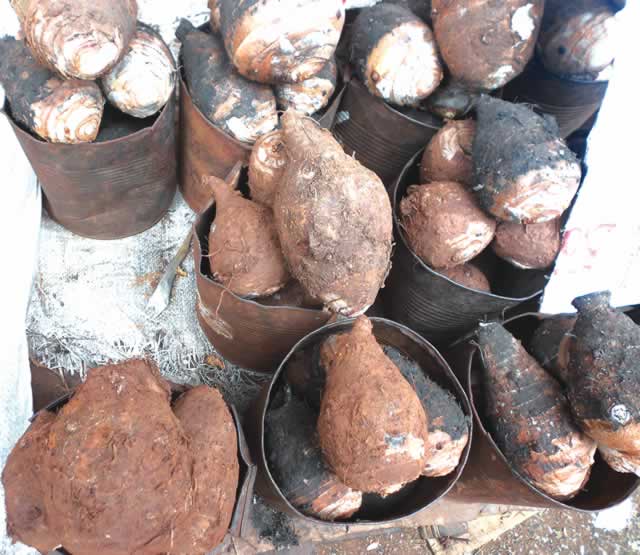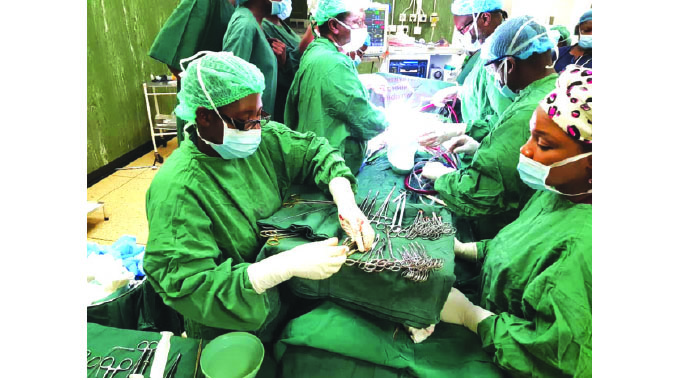Zim needs strong resilience framework

By Charles Dhewa
Resilience is about people’s ability to cope with life’s difficulties such as vulnerability to climate change, malnutrition and unstable incomes. In the face of climate change and stagnant economic growth across the globe, Zimbabwe needs a strong resilience framework. Measuring resilience should include changing the institutional emphasis on evidence collection and analysis as well as understanding how farmers, traders, consumers and ordinary people cope with uncertainties. However, when measuring resilience the devil is the attention to detail. For instance, some technical details may be difficult to reconcile with real life situations. On the other hand, helping Government departments and rural communities to use all the knowledge at their disposal can be more of an organisational and institutional issue than technical.
Harnessing the power of quantification and markets
Assessing community resilience can embrace environmental and ecosystem elements such as water quality/quantity, soil quality, biodiversity, biomass and vegetation, among other natural resources. Although it can be easy to develop indicators for these elements, the most important elements like social capital are always difficult to pin down. Creating a rural market as an institution can empower farmers and create employment for local people who probably have no idea how to unlock the value of abundant resources in their community. In the same way, the value of education depends upon job opportunities.
Most smallholder farmers are vulnerable to market failure and this traps them in poverty although they will have worked very hard to produce commodities. Structuring markets and coordinating production in response to the market can be a way of building the resilience of farmers While infrastructure such as irrigation schemes and roads are engineering concerns, creative deployment of ICTs should see the development of software-based tools that can assess the sustainability and resilience this infrastructure including pastures and water sources. This resilience dimension also covers institutional, social, economic and environmental perspectives.
Traditionally, in most communities agriculture has been driven by the livelihood factor not income. Even today, at least 50 percent of food is often for household consumption and surplus for the market. There is considerable evidence showing that cash crop production has compromised community resilience in terms of food and even income. Cash crops contribute to the vulnerability of farming communities especially given that most farmers do not have much knowledge on what contributes to the collapse of international markets. They often end up blaming buyers.
Farmers’ production capacity is influenced by buyers’ perceptions and projections of the international market thus there is often no fall-back position for farmers when things go wrong. When prices plunge, buyers sometimes gamble with farmers. If prices are good the buyer gets a good return. When the market is bad buyers do not incur huge costs, rather they lower price in ways that push the burden of the low international price onto the farmer. This compromises farmers’ resilience strategies.
On the other hand, the impact of globalisation varies enormously in different situations. In Zimbabwe, the fall of cotton and tobacco prices on the international market often deal a heavy blow on smallholder farmers who depend on these commodities. Building strong market structures and market integration between formal and informal markets are some of the mechanism that can curtail these challenges and ensure resilience. We also need empirical research to identify characteristics at community level that can help explain when support at community level is likely to benefit everyone, and when it is more likely to further entrench elites.
The role of judgement and researching for resilience
In the absence of longitudinal evidence, our planners currently rely on their judgement to make decisions. In addition, commonly used indicators of social capital which measure the number of organisations to which people belong are meaningless without considering the nature of those organisations, the relationships that exist between people within them, the costs of belonging to them and many other questions. Many different kinds of research will be necessary to throw up new ways of thinking about resilience and vulnerability and to help build up evidence to answer many specific questions over time.
Resilience comes from having a potential income source which can be relied upon if another fails
An assessment of the resilience of people’s livelihoods in rural areas that depend on agriculture may need to pay as much attention to shocks which threaten economic opportunities in urban informal markets as it does to rural markets. Research institutions should conduct more research on indigenous food systems and drought tolerant crops. In some communities people survive on baobab and other indigenous fruits during severe droughts. Unfortunately, there doesn’t seem to be efforts to develop plantations for baobab fruit, mazhanje and other fruits that are part of communities’ coping mechanisms and resilience. Research on these foods should be during drought to see how they adapt. At a national level we seem to be ignoring these foods yet they represent a resilience mechanism which we have to tap into. Nyevhe/Ulude and other indigenous vegetables grow naturally but we have not vigorously tried to harvest their seed in order to understand their natural resilience.
Risk and resilience
Zimbabwe’s financial institutions interpret risk as being about uncontrollable natural hazards rather than about structural vulnerability like socio-economic issues. It is much easier to measure events such as rainfall than it is to measure circumstances which deprive some people of access to irrigation. Banks should understand risk as part of the ability to invest in the future and an indicator of resilience.
In fact they should encourage entrepreneurship by rewarding risk-taking behaviour among farmers, traders and entrepreneurs. Measuring resilience must be underpinned by a good understanding of why people make the choices they do.
Economic agents like financial institutions, development partners and policy makers have a critical role in ensuring the resilience of individuals and communities. While there is proof that farmers have reliable resilience and coping strategies, this view is not shared by financial institutions who tend to be risk-averse. They try to get the best out of farmers even during times of national calamities. If they suspect a drought, most banks suddenly stop their relationship with farmers. This means they leave farmers more exposed rather than coming up with resilient financial strategies. On the other hand, development agencies should look beyond food aid but introduce interventions that strengthen community resilience.
The essence of learning from what works
While researchers and those implementing projects in rural and urban areas find it quicker and easier to focus on formal dimensions of life, such an approach is not very useful in societies where the informal is paramount, for example Zimbabwe. Understanding changes brought by interventions and policies into people’s lives and how these changes occur is probably a priority area where quantified understanding is needed. All interventions should be based on documented analysis which gives the rationale for addressing the intended change.
The importance of improving people’s ability to cope should be explained as well as how a particular intervention interacts with various economic, political and other forces that ultimately shape people’s lives. Resilience is an area of work where many different disciplines can contribute. This analysis should be based on analytical frameworks that accommodate various disciplines (e.g. livelihoods, agronomy, trade, nutrition and public health, among others.
In order to learn what works, we need to be constantly generating evidence and creating spaces for that evidence to be interpreted in different ways. Lessons about resilience may emerge through comparisons or contrasts from one community to another.
But cross-situational learning cannot emerge from context-free analysis – it will slowly be gained if patterns can be discerned in the specific and context-grounded analyses of different situations. Zimbabwe has many policies, frameworks, tools and methodologies which if properly harmonised can contribute to national socio-economic resilience. Support for economic growth should not be geared simply to increasing the Gross Domestic Product (GDP), but must ensure that unemployed youth benefit from improvements in economic activities. While it is impossible to say in advance how resilient people are until they are faced with a test, there are many dimensions of coping including economic, social and psychological mechanisms. Understanding all these dimensions requires an inter-disciplinary approach.
Towards a resilience agricultural ecosystem
Some of the components of an agriculture ecosystem through which resilience can be expressed include the natural environment, institutions and other actors. Naturally the environment is always adjusting to changing climate and human interference. This change has to be thoroughly understood and includes how natural products like indigenous fruits, pastures, indigenous livestock and indigenous crops adapt to a changing climate. The majority of indigenous crops, livestock and fruits go through a natural evolution. On the other hand, most smallholder farmers use retained seed to produce food. Research that tracks what happens between soils and retained seed as part of adaptation to climate change can generate reliable knowledge systems.
In our embrace of industrial agriculture, we seem to have developed some seed varieties that we think are adaptable yet indigenous crops and livestock adapt naturally without genetic manipulation. This capacity of indigenous crops and livestock to adapt naturally offers a strong research base. When it comes to the cost factor, every year, smallholder farmers seem to be incurring more costs buying seed and fertilizer. One would expect the survival probability of maize varieties to increase as seed varieties adapt to climate change. On the other hand, no meaningful research has been conducted on how small grains, indigenous fruits, tubers and pastures adapt to climate change.
This is in spite of the fact that most farmers have more trust in natural resilience inbuilt in crops that are part of their ecosystem than in hybrids. To farmers, this is a foundation of resilience and copying mechanisms.
Indigenous and local crops and livestock represent more than 60 percent of every farming community’s resilience capacity. We should go further and develop business models that support value addition, processing and even financing of locally adaptable crops and livestock. Unfortunately Zimbabweans use derogatory terms like “orphan” crops to describe indigenous crops yet the most important attribute is that the “orphan” crop has its own survival mechanisms. In fact, it is orphaned because we lack the knowledge to support its resilient nature.
There are still knowledge gaps in terms of what scientists offer as drought resistant characteristics of hybrids. This is in spite of sufficient proof that natural adaptation is more powerful than genetic manipulation of crops and livestock by human beings. Our knowledge generation seems limited to developing drought resistant varieties but within a short period these varieties lose their resistance capacity. On the contrary, wild fruits, pests and some small grains become adaptive and resistant as they are used. This is a natural resilience strategy for these crops. We should build on indigenous knowledge which has a way of selecting good varieties and livestock breeds from time immemorial – well before hybrids were discovered. Unfortunately much of this knowledge is not documented.
Let’s not link our indigenous food to ailments or diseases
Most of our indigenous food systems are being promoted with a bias towards their claimed capacity to address ailments like cancer, diabetes, high blood pressure and even HIV and AIDs. This is not the right way to promote a food system. To farmers, we have to start promoting indigenous foods from a livelihood and resilience angle. For consumers our message should focus on nutritional and healthy benefits without pinpointing particular diseases. Linking food to a particular disease generates some unintended negative messages with those who think they are not sick refraining from eating foods which they associate with diseases.
While there is a powerful shift in the meaning of diets and staple food, we have also seen indigenous fruits contributing to income resilience by being sold on the market. Selling indigenous fruits is now a source of income for many households. By bringing indigenous fruits to the market, farmers and traders are also promoting these foods, mostly to urban folk who have become used to think of fruits in terms of apples, oranges and bananas. After meeting their livelihood and resilience requirement, farmers and local people bring surplus fruits to the market. Unfortunately there are no preservation methods to take them to the next marketing season.
People who spend some time in hotels drink apple juice, guava juice, mango juice and many others juices. However, we are still to see baobab juice and that from other indigenous fruits being promoted in our local hotels. Even if we drink mango juice, is it from Mutoko, Murewa, Mhondoro, Honde Valley, Shamva, Zvimba, Bikita and many other local areas? By galloping juice from outside we are not supporting our own people. We have to support our own communities based on their economic drivers.
Mutoko is known for mango fruit and guava fruit among others but we have not done much to understand the soils, climatic conditions and other natural factors that make mango and other fruits adaptable to Mutoko. Such knowledge is important for stepping up fruit production in this area. Mazowe district got its name from orange plantations. There is no reason why communities with so many baobab fruits should not be supported to a point of being called Mawuyu area. This will be a way of supporting the role of local resources in the socio-economic resilience of the whole country.
Charles Dhewa is a proactive knowledge management specialist and chief executive officer of Knowledge Transfer Africa (Pvt) (www.knowledgetransafrica.com ) whose flagship eMKambo (www.emkambo.co.zw ) has a presence in more than 20 agricultural markets in Zimbabwe. He can be contacted on: [email protected]; Mobile: +263 774 430 309 / 772 137 717/ 712 737 430.







Comments